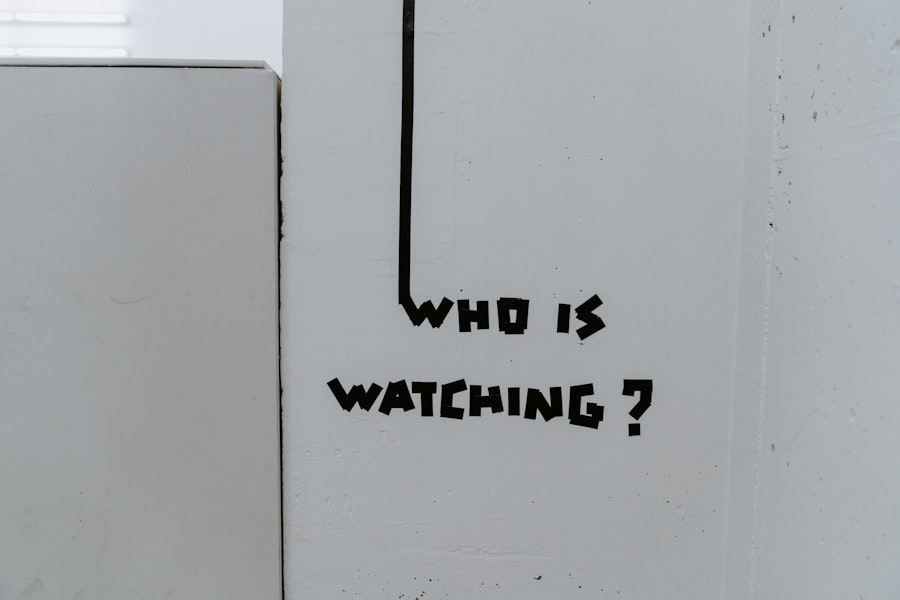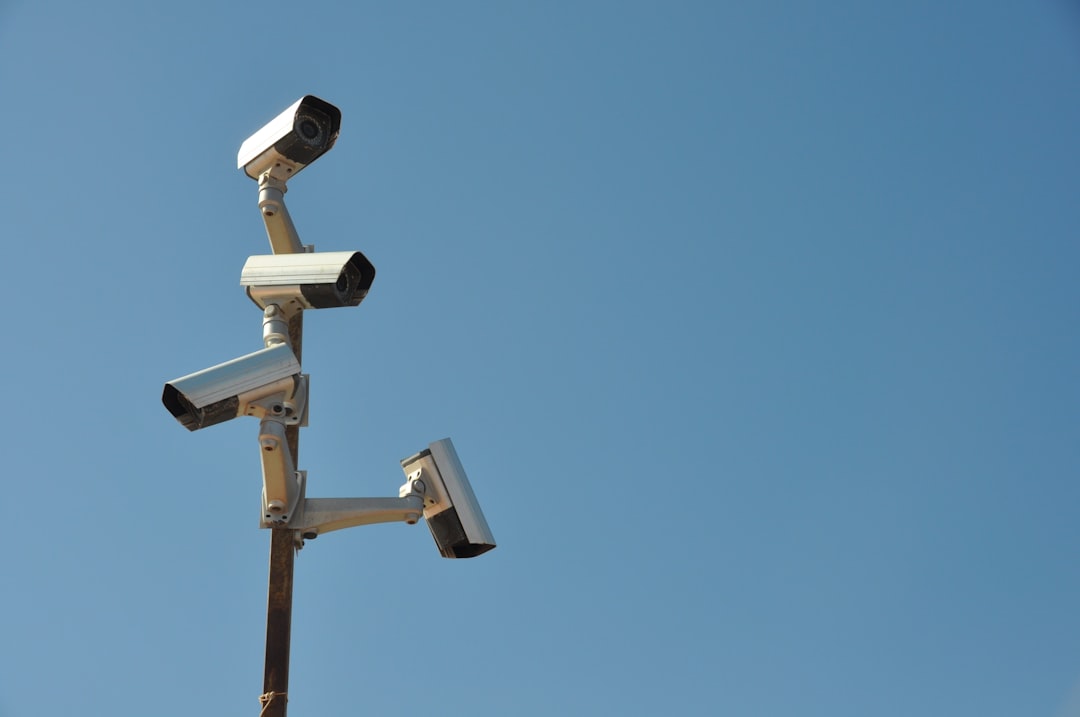In today’s fast-paced business environment, the significance of telemetry and surveillance cannot be overstated. As organizations strive to enhance productivity and ensure safety, these tools have become integral to workplace management. Telemetry, which involves the automatic collection and transmission of data, allows you to monitor various aspects of operations in real-time.
This capability can lead to improved decision-making and operational efficiency. On the other hand, surveillance encompasses a broader range of monitoring practices, including video surveillance and employee tracking, aimed at ensuring compliance with company policies and safeguarding assets.
When you implement telemetry and surveillance effectively, you create an environment where employees understand that their performance is being monitored, which can motivate them to adhere to best practices. However, it is crucial to approach these tools with care, as they can also raise concerns about privacy and trust within the workplace. Striking the right balance between monitoring for productivity and respecting individual privacy is essential for maintaining a healthy work atmosphere.
Key Takeaways
- Telemetry and surveillance serve distinct but complementary roles in monitoring workplace activities.
- Telemetry offers benefits like improved efficiency and data-driven decision-making.
- Surveillance can enhance security but may raise privacy and trust concerns among employees.
- Ethical guidelines and privacy protections are essential to balance monitoring with employee rights.
- Leveraging technology thoughtfully helps create a positive work environment through balanced telemetry and surveillance.
Understanding the Difference Between Telemetry and Surveillance
To fully appreciate the role of telemetry and surveillance in the workplace, it is vital to understand their distinct characteristics. Telemetry primarily focuses on collecting quantitative data related to performance metrics, such as productivity levels, equipment usage, and operational efficiency. This data is often analyzed to identify trends and areas for improvement.
For instance, if you are managing a manufacturing facility, telemetry can help you track machine performance in real-time, allowing for timely maintenance and minimizing downtime. In contrast, surveillance encompasses a broader scope that includes both quantitative and qualitative monitoring. While it may involve data collection similar to telemetry, it also includes visual monitoring through cameras and other devices.
Surveillance aims to ensure compliance with regulations, protect company assets, and maintain a safe working environment. Understanding these differences is crucial for you as a manager or business owner, as it allows you to choose the right approach based on your specific needs and objectives.
The Benefits of Telemetry in the Workplace

Telemetry offers numerous advantages that can significantly enhance workplace efficiency. One of the primary benefits is the ability to gather real-time data that can inform decision-making processes. When you have access to accurate and timely information about employee performance or equipment status, you can make informed choices that lead to improved productivity.
For example, if telemetry data indicates that a particular team consistently meets its targets, you might consider allocating additional resources to that team to further boost their output. Another key benefit of telemetry is its potential for predictive analytics. By analyzing historical data trends, you can anticipate future performance issues or equipment failures before they occur.
This proactive approach not only saves time and resources but also minimizes disruptions in operations. Additionally, telemetry can enhance employee engagement by providing them with feedback on their performance. When employees see how their efforts contribute to overall success through data-driven insights, they are more likely to feel valued and motivated.
The Benefits of Surveillance in the Workplace
| Benefit | Metric | Impact | Example |
|---|---|---|---|
| Increased Employee Productivity | 10-15% productivity improvement | Higher output and efficiency | Monitoring helps reduce idle time |
| Reduction in Theft and Fraud | Up to 50% decrease in incidents | Lower financial losses | Video surveillance deters theft |
| Improved Workplace Safety | 20% fewer workplace accidents | Safer environment for employees | Real-time monitoring of hazardous areas |
| Enhanced Compliance | Compliance rates increased by 30% | Reduced legal risks and penalties | Surveillance ensures policy adherence |
| Better Conflict Resolution | 50% faster dispute resolution | Improved employee relations | Recorded evidence clarifies incidents |
Surveillance plays a crucial role in maintaining security and compliance within the workplace. One of its most significant benefits is the deterrent effect it has on potential misconduct or theft. When employees know they are being monitored, they are less likely to engage in behaviors that could harm the organization or their colleagues.
This sense of accountability can lead to a more disciplined work environment where everyone adheres to established policies and procedures. Moreover, surveillance can enhance safety in the workplace by allowing you to monitor high-risk areas or activities. For instance, in industries such as construction or manufacturing, video surveillance can help ensure that safety protocols are being followed.
In the event of an accident or incident, having recorded footage can provide valuable insights for investigations and help prevent similar occurrences in the future. Ultimately, surveillance contributes to a safer and more secure workplace for everyone involved.
The Potential Downsides of Telemetry in the Workplace
While telemetry offers numerous benefits, it is not without its drawbacks. One significant concern is the potential for over-reliance on data-driven metrics at the expense of human judgment. When you focus solely on numbers, you may overlook important qualitative factors that contribute to employee performance and morale.
For instance, if an employee consistently meets productivity targets but struggles with teamwork or communication, relying solely on telemetry data may lead you to overlook these critical aspects. Additionally, telemetry can create a sense of constant monitoring that may lead to employee anxiety or stress. When individuals feel they are under constant scrutiny, it can negatively impact their job satisfaction and overall well-being.
Striking a balance between leveraging data for improvement while fostering a supportive work environment is essential for maintaining employee morale and engagement.
The Potential Downsides of Surveillance in the Workplace

Surveillance in the workplace also comes with its own set of challenges and potential downsides. One of the most pressing concerns is the invasion of privacy that employees may feel when they know they are being monitored. This feeling can lead to distrust between management and staff, ultimately harming workplace culture.
If employees perceive surveillance as an infringement on their personal space or autonomy, it may result in decreased morale and productivity. Moreover, excessive surveillance can create a toxic work environment where employees feel like they are constantly being watched rather than trusted to perform their duties independently. This lack of trust can stifle creativity and innovation, as individuals may be less willing to take risks or propose new ideas if they fear negative repercussions from management.
It is crucial for you as a leader to find ways to implement surveillance thoughtfully and transparently to mitigate these potential downsides.
Finding the Right Balance Between Telemetry and Surveillance
Achieving a harmonious balance between telemetry and surveillance is essential for fostering a productive work environment. You must consider your organization’s specific needs while also taking into account employee perspectives on monitoring practices. One effective approach is to involve employees in discussions about telemetry and surveillance policies.
By soliciting their input and addressing their concerns, you can create a sense of ownership over these practices. Additionally, it is important to establish clear guidelines regarding what data will be collected and how it will be used. Transparency is key; when employees understand the purpose behind telemetry and surveillance efforts, they are more likely to accept them as necessary tools rather than intrusive measures.
Regularly reviewing these practices and making adjustments based on feedback will help ensure that both management objectives and employee well-being are prioritized.
Implementing Ethical Guidelines for Telemetry and Surveillance
To navigate the complexities of telemetry and surveillance ethically, it is essential to establish clear guidelines that prioritize respect for employee privacy while still achieving organizational goals. You should develop a comprehensive policy outlining how data will be collected, stored, and used within your organization. This policy should also address who has access to this information and under what circumstances it may be shared.
Furthermore, consider implementing training programs for both management and employees on ethical practices related to telemetry and surveillance.
Regularly revisiting these guidelines will ensure they remain relevant as technology evolves and workplace dynamics change.
Ensuring Employee Privacy in the Workplace
Protecting employee privacy should be a top priority when implementing telemetry and surveillance measures in your organization. You must be transparent about what information is being collected and why it is necessary for business operations. Providing employees with clear communication about their rights regarding privacy will help alleviate concerns about potential misuse of data.
Additionally, consider implementing measures such as anonymizing data where possible or limiting access to sensitive information only to those who need it for legitimate business purposes. By taking proactive steps to safeguard employee privacy while still utilizing telemetry and surveillance tools effectively, you can create an environment where individuals feel respected and valued.
The Role of Technology in Balancing Telemetry and Surveillance
Technology plays a pivotal role in finding the right balance between telemetry and surveillance in the workplace. Advanced tools allow you to collect data efficiently while minimizing invasiveness. For instance, using software that aggregates performance metrics without tracking individual keystrokes or movements can provide valuable insights without compromising employee privacy.
Moreover, technology enables real-time communication between management and staff regarding monitoring practices. Utilizing platforms that allow employees to voice concerns or provide feedback about telemetry or surveillance measures fosters an open dialogue that can lead to improvements in workplace culture. Embracing technology thoughtfully will empower you to leverage its benefits while respecting individual rights.
Creating a Positive Work Environment with Balanced Telemetry and Surveillance
Ultimately, your goal should be to create a positive work environment where both telemetry and surveillance contribute to organizational success without undermining employee trust or morale. By prioritizing transparency, ethical guidelines, and open communication channels, you can foster an atmosphere where employees feel valued rather than scrutinized. Encouraging collaboration between management and staff regarding monitoring practices will help build a culture of trust that enhances overall productivity.
When employees see that telemetry and surveillance are used as tools for support rather than control, they are more likely to engage fully in their work while feeling secure in their roles within the organization. In conclusion, navigating the complexities of telemetry and surveillance requires careful consideration of both organizational needs and employee perspectives. By finding the right balance between these two approaches while prioritizing ethical guidelines and privacy protections, you can create a thriving workplace that benefits everyone involved.
In recent discussions about the implications of telemetry and surveillance in the workplace, it’s essential to consider the broader context of employee monitoring and its effects on productivity and privacy. A related article that delves into these themes can be found at
